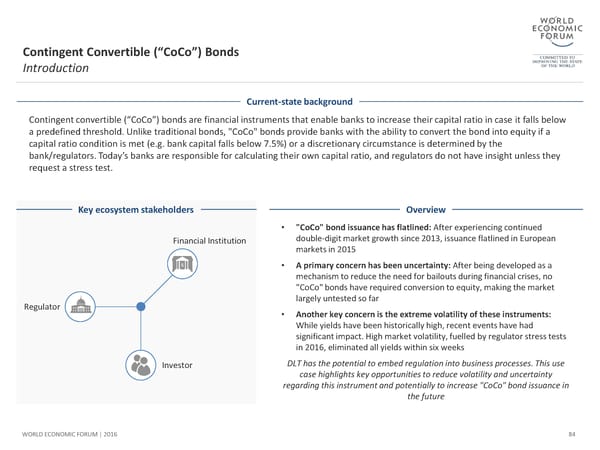Contingent Convertible (“CoCo”) Bonds Introduction Current-state background Contingent convertible (“CoCo”) bonds are financial instruments that enable banks to increase their capital ratio in case it falls below a predefined threshold. Unlike traditional bonds, "CoCo" bonds provide banks with the ability to convert the bond into equity if a capital ratio condition is met (e.g. bank capital falls below 7.5%) or a discretionary circumstance is determined by the bank/regulators. Today’s banks are responsible for calculating their own capital ratio, and regulators do not have insight unless they request a stress test. Key ecosystem stakeholders Overview • "CoCo" bond issuance has flatlined: After experiencing continued Financial Institution double-digit market growth since 2013, issuance flatlined in European markets in 2015 • A primary concern has been uncertainty: After being developed as a mechanism to reduce the need for bailouts during financial crises, no "CoCo" bonds have required conversion to equity, making the market Regulator largely untested so far • Another key concern is the extreme volatility of these instruments: While yields have been historically high, recent events have had significant impact. High market volatility, fuelled by regulator stress tests in 2016, eliminated all yields within six weeks Investor DLT has the potential to embed regulation into business processes. This use case highlights key opportunities to reduce volatility and uncertainty regarding this instrument and potentially to increase "CoCo" bond issuance in the future WORLD ECONOMIC FORUM | 2016 84
 The Future of Financial Infrastructure Page 83 Page 85
The Future of Financial Infrastructure Page 83 Page 85